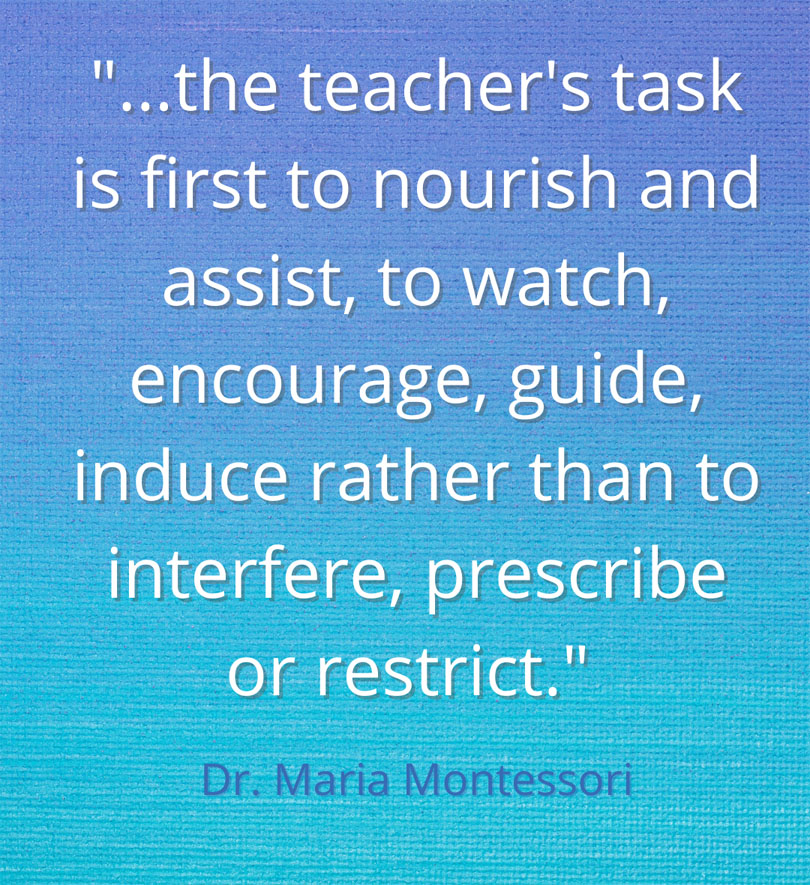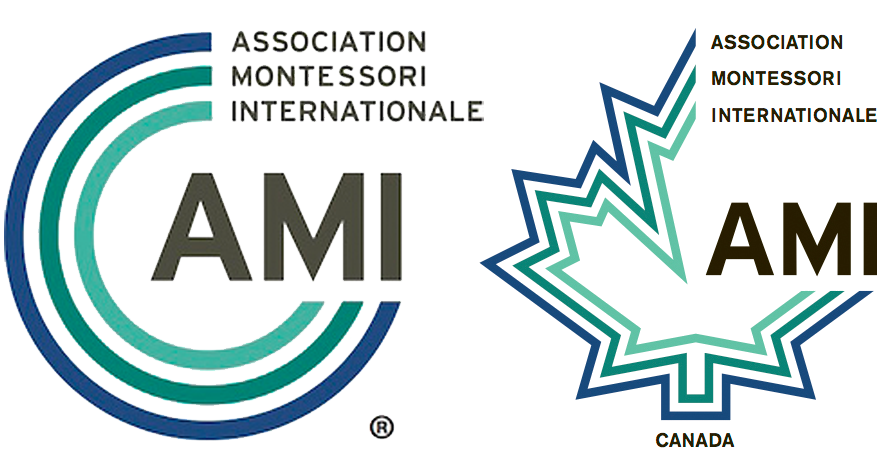Montessori Trench Talk
A View from the Trenches
Every detail within the classroom is important to the lab. We are scientists in our own right, using tools they use. Using observation and collecting data we gather information and gain understanding of those who amaze us and others who may perplex us. What is done within our labs may not always be by the book. By this, I mean our own wisdom and knowledge come into play, when plans go out the window. This cannot be taught in the best of training institutions.
The training course allows you to know the materials, the reasons for the presentations and when to use the exquisitely designed apparatus. Understanding the details of presentations can turn a classroom into a spectacle as we watch one miracle after another. Right now, I would like to address those times you'd wish a miracle would come forth as your new little Lucy is experimenting with gravity by climbing the walls. (An aside, I did have a frizzy red-haired Lucy climbing walls when I ventured into a new setting in Houston, Texas. Now we have special climbing walls for these necessary activities. I wonder if a classroom teacher was instrumental in the design.)
The first rule of thumb is to, as Renilde Montessori reiterated many times, look at the child, look at the child, yes, look at the child in front of you. For heaven's sake, look at the child in front of you. By doing this, and here is where our own wisdom comes in, make that psychic connection with that child's very being. Allow your heart to connect with the child you find perplexing/annoying/difficult. Our job is to understand the child in our care. It is not their job to do all we expect or ask of them. Making puppets is not our business. We are there for the children, carrying our learned and experienced knowledge with us each day. The children are not there for our aggrandizement! Our work is, yes, a selfless endeavor.
We need to recognize the feeding of our own psyche comes from outside the classroom in forms of colleagues, friends, family and physically speaking: from facials, walks in nature, glorious chocolates, pedicures, massages and love from your own support network. It is definitely important to have a balance in our daily or at least weekly lives. We have chosen an exceptional way of living, but I feel precautions must be taken. Qigong, Taoist Tai Chi, Yoga, meditation, alternative methods of healing and my own balance of music are a few examples of nurturing. More active methods might be kayaking, snorkeling and snowshoeing. While in the classroom, I've been able to feel balanced as long as the time outside the classroom/lab has involved the things that feed my own soul. Please do not misunderstand that I am eluding to the fact that being in the classroom/lab or school does not feed our psyche. The classroom hopefully does feed your soul as well, but the point to be made here, is the notion of our selflessness to the individual needs of the child and parent body in our care. Montessori is a way of life, so remember to also take care of yourself outside the classroom for your best performances within the classroom.
Since first stepping into Victoria College in Toronto, up those beautifully worn steps, painstakingly I was told and now understand that Montessori IS a way of life. Many of us know a loving, correct way to deal with a difficult situation in the class, but if your own needs are not met within your life, on most occasions, the end result will not always turn out to work for the individual or the group.
Preparation of the Adult in the Environment:
Four Daily Steps for Relooking/Revisiting:
First Step: Observe – Keep your eyes on the whole class, even during presentations (although very, very discreetly). Never have your back to a child in the classroom.
Second Step: Be there – promote understanding of the individual and the group you have.
Third Step: Daily attention to organization and cleanliness. Maintenance of all aspects of the prepared environment.
Fourth Step: Be firm, matter of fact when redirection, discipline is deemed necessary. Depending on the situation and the child at hand, use humour that fits that particular child's sensibilities.
A few children and circumstances are kept in one's memory no matter what our position is or where we work. My first vignette is about a curly haired 3-½ year old girl who would come in each morning, walk straight to the bow-tying frame and sit down with it. This was the beginning of the school year. There was not one thought of interrupting this focused girl. Her task was the same each day for two months. Once the information was ingrained within her, she went off to many other activities within the classroom. This very important time was necessary for her and most satisfying for me to allow my students to know themselves and follow their inner drives. It works!
Another student was a petite 3-year-old boy, who did not have a full understanding of the language in our classroom. He observed the myriad of activities in a classroom of 33, without touching one piece of equipment for the first six months he was with us. When he decided it was time, he used appropriate materials for his developmental level more precisely than I had ever seen. His observation skills were keen and he became our brilliant student. With one like this, the understanding of the parents involved is crucial. We were lucky and they were comfortable with their son's own method of learning. The other important point here is that through your own observation, there is a difference of non-interest and wandering and that of keen observation on the part of the student. Know the difference.
As many of you have already found, giving appropriate responsibility to one you see as your "problem" child can change the inner workings of that individual almost immediately. Self-worth is key. The child's own timing is key. Understanding this for the children as well as for parents is key. We all know this as we come to understand ourselves. I have been told to write for quite some time. Writing had to come when I felt it was a natural evolution for me. The seed was planted. We continually plant the seeds for the individual children as well as for the classroom/lab, the parent group, the community, the state/province and our countries keeping the health of our planet in mind at all times. Even as adults, it does not feel good to be told what to do, but it does feel healthy to have seeds planted within your psyche. Allow, allow, allow and trust in each child to evolve, as each plant is able to grow at its own rate. We are not apart from nature, we ARE nature.
Maria Montessori and Betty Stephenson mentioned that chaos in the classroom does occur, but do protect that little being who is finally focused. Look at the eyes of the children. Are their eyes dulled or clear, forlorn or with joy, blank or filled with spark?
In many instances I've had to act as policewoman at first, making clear guidelines and boundaries. It is truly best if the children can help set those guidelines. When dealing with ongoing issues with students, find yourself going against what the child is expecting you to say. Work with the materials yourself in the most focused/interested way. Have a lovely snack. Bring joy in and joy will multiply.
The parents are an important part of this equation. Parents want to know you know their precious pearls. Feed the parents as you do their little ones. "In the best interest of your child…" is still a good way to begin your presentation of a solution with parents. Bring them along on your journey. The effort you put in works to everyone's benefit in the long run.
We all engage in "Trench Talk" when we get together. It is always good to confirm what we already know and need to use again. It is a lovely life, engaging with other Montessori practitioners. Our communities need us and we need to continue to feed ourselves the best way we know how. Let's keep up our grand work!

Blog Posts
- 2022
- January 20, 2022
"Montessori Trench Talk" - 2021
- April 22, 2021
"Is Montessori for Everyone?" - 2019
- March 28, 2019
"The Reasoning Mind of the Six to Twelve-year old" - 2018
- August 9, 2018
"Fostering Independence" - September 1, 2018
"Respect for the Child" - December 20, 2018
"Nurturing the Absorbent Mind"


